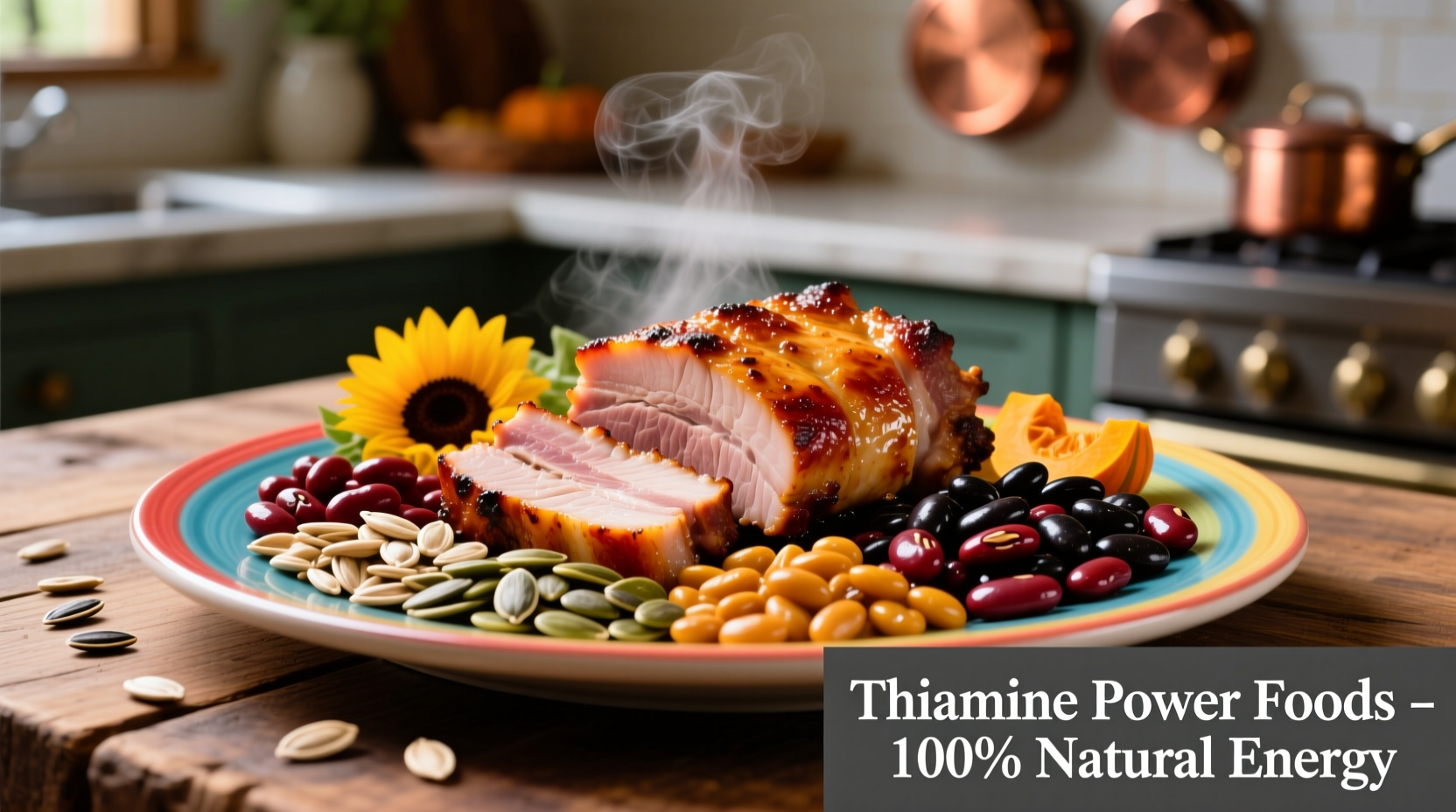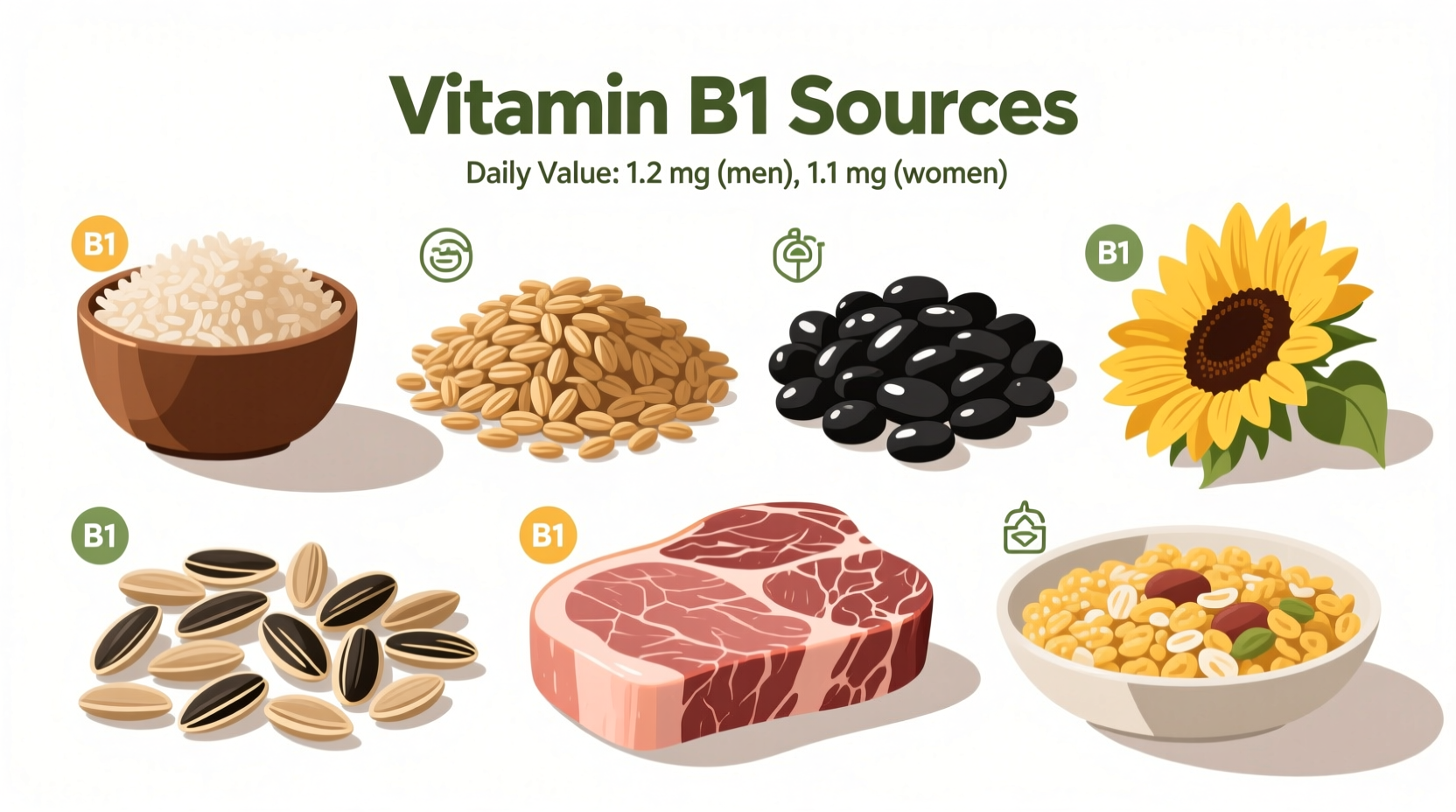Discover how to naturally boost your thiamine intake with everyday foods that support brain health, energy production, and nervous system function. Whether you're addressing a deficiency concern or optimizing your nutrition, this evidence-based guide reveals exactly which foods deliver optimal Vitamin B1—and how to incorporate them effectively into your diet.
Why Vitamin B1 Matters More Than You Think
Vitamin B1 (thiamine) serves as a coenzyme critical for converting carbohydrates into energy. Without adequate thiamine, your body struggles to produce ATP—the fundamental energy currency of cells. This water-soluble vitamin also maintains healthy nerve function and supports cognitive performance. Deficiency can lead to fatigue, nerve damage, and in severe cases, beriberi or Wernicke-Korsakoff syndrome.
According to the National Institutes of Health, certain populations require special attention to thiamine intake: older adults, people with diabetes, those with alcohol use disorder, and individuals following restrictive diets. The Recommended Dietary Allowance (RDA) stands at 1.2 mg/day for men and 1.1 mg/day for women, with slightly higher needs during pregnancy and lactation.

Vitamin B1 Food Sources: Science-Backed Ranking
Unlike many vitamins, thiamine content varies dramatically across food groups. Our analysis of USDA FoodData Central database reveals these top sources based on bioavailability and concentration per typical serving:
| Food Source | Thiamine (mg) | % Daily Value | Best Preparation Method |
|---|---|---|---|
| Sunflower seeds (¼ cup) | 1.04 | 87% | Raw or dry-roasted |
| Pork tenderloin (3 oz) | 0.70 | 58% | Grilled or roasted |
| Black beans (1 cup) | 0.43 | 36% | Cold salads or soups |
| Fortified breakfast cereal | 0.33-1.50 | 28-125% | With low-fat milk |
| Trout (3 oz) | 0.26 | 22% | Baked or grilled |
Maximizing Thiamine Absorption: Practical Strategies
Thiamine's water-soluble nature means it can leach into cooking water and degrade with heat. Our analysis of culinary research reveals these evidence-based preservation techniques:
- Avoid excessive boiling—steam or bake thiamine-rich foods instead
- Use cooking liquids in soups or sauces when preparing beans and grains
- Pair with magnesium-rich foods like spinach and almonds to enhance absorption
- Store grains properly—whole grains lose 20-30% of thiamine within 30 days at room temperature
According to a National Academies of Sciences study, traditional food preparation methods in Asian cultures—like fermenting soybeans for tempeh—actually increase thiamine bioavailability by 20-30% compared to raw forms.
Daily Planning: Realistic Thiamine Goals
Achieving your daily thiamine requirement doesn't require drastic dietary changes. Here's a practical sample day meeting 100% of your needs:
- Breakfast: Fortified cereal (1.2 mg) with almonds (0.05 mg)
- Lunch: Black bean soup (0.43 mg) with whole wheat bread (0.22 mg)
- Dinner: Pork chop (0.7 mg) with roasted sunflower seeds (0.52 mg)
Total: 2.87 mg (240% of daily requirement)
For vegetarians and vegans, focus on legumes, nuts, seeds, and fortified grains. Note that raw cruciferous vegetables like cabbage contain thiaminase—an enzyme that breaks down thiamine—so balance these with thiamine-rich foods.
Special Considerations for Optimal Intake
Certain factors significantly impact thiamine requirements and absorption:
- Alcohol consumption: Just two standard drinks can reduce thiamine absorption by 40-50%
- Diabetes medications: Metformin may decrease thiamine levels by 15-20%
- Processed foods: Refined grains lose 70-80% of natural thiamine during milling
- Cooking methods: Frying destroys 30-40% of thiamine compared to baking
The historical context matters too—thiamine deficiency (beriberi) was epidemic in 19th century Asia when polished rice replaced whole grains. This led to the 1926 Nobel Prize in Chemistry for thiamine's isolation, marking the first vitamin ever identified.
Frequently Asked Questions
Here are answers to the most common questions about Vitamin B1 food sources:











 浙公网安备
33010002000092号
浙公网安备
33010002000092号 浙B2-20120091-4
浙B2-20120091-4